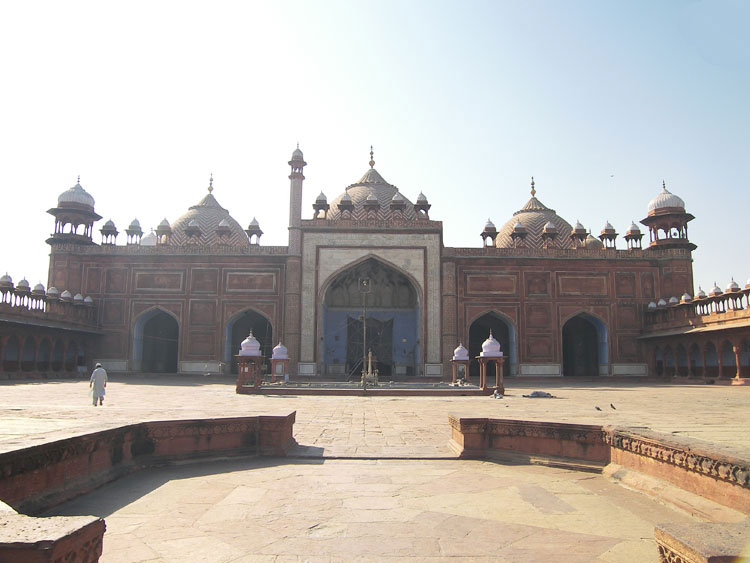During the Mughal era, especially in the 16th and 17th centuries, Agra was the capital city of India and thus held an important position in the Indian Map.
Agra has to some extent become synonymous to the grand Taj Mahal - one of the Seven Wonders of the World. Many more important places including forts, palaces, mosques and the likes were built here that boasts of high Mughal architectural styles. One such place is the Jama Masjid or the Jami Masjid built in 1648 by Emperor Shah Jahan and dedicated to his loving daughter Jahanara Begum. The mosque also known as the "Friday Mosque" is one of the largest mosques in India and most sought after pilgrimage site by the devotees. It is also one of the most visited tourist destinations in Agra district. Some of the designs of the mosque reflect beautiful Iranian architecture.
It is situated opposite the Agra Fort right in the middle of Fatehpur Sikri. Earlier there was a Tripolia Chowk, octagonal in shape in-between the Jama Masjid and the Delhi Gate of the Agra Fort. Later on it was demolished to build Agra Fort Railway Station.
History and Architecture
Built by Shah Jahan in 1648, it took six years and 5000 workers to complete the mosque. It rests on a high plinth with five arched entrances leading to the courtyard. On its right side is the Jammat Khana hall. Next to the hall is the Zenana Rauza, the Tomb of the royal ladies. The Tomb of the sacred Sufi Saint Sheikh Salim Chisti is within the compound of Jama Masjid. History says that Emperor Akbar, the greatest and most renowned Mughal Emperor of the dynasty had no heir. He earnestly sought blessings from the Sufi Saint and through the divine grace of the Saint the Emperor was blessed with a son. He named his son Salim after the name of the saint who after Akbar became the emperor and was famously known as Emperor Jehangir. As mark of true gratitude and respect, the Emperor Akbar dedicated a magnificent city in honor of the Sufi saint and a mosque. The emperor also built a royal tomb of the Saint made of red sandstone after his death. Later on Emperor Shah Jahan erected another tomb of the Saint with white marble. The beautiful paintings, the intricate designs of the latticework, glazed tiles adorned with floral motifs of myriad colors, carvings, the pillared Dalan, the Chatri on the roof, the geometrical designs in the central arch of the Iwan, the beautiful Chhajja makes it architecturally rich and stand apart on its own right.
Timings
Open all days.
Winter 8:30 a.m - 5:00 p.mSummer - 7.00 a.m - 600 p.m
Location and how to reach
The Jama Masjid is located in Agra, India. The city of Agra can be approached by road, rail or air. The nearest Agra airport is about 7 km from the center of the city. The main railway station, Agra Cantonment is quite near to the place. Regular buses, luxury coaches, taxis can be availed to reach Agra. The major bus stands in Agra are Agra Fort and Idgah bus stand.
Last Updated on : July 19, 2013

